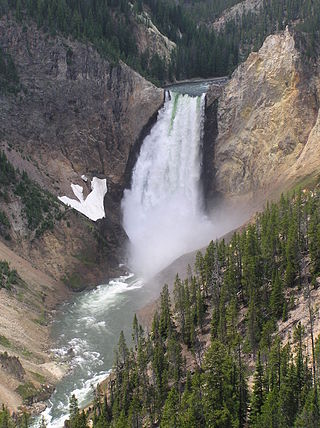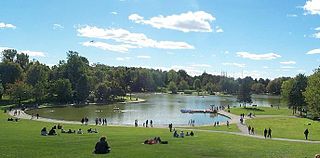See also
- ↑ "Natural Reserves and Parks | Encyclopedia.com". www.encyclopedia.com. Retrieved 2023-02-14.
A National Reserve is a land designation for protecting conservation values. National Reserve is an umbrella term encompassing many subcategories including managed nature reserves, wildlife reserves, fauna/floral reserves, avian reserves, geological reserves, forest reserves, and even things outside the realm of natural environment like historical preservations and cultural preservations that protect the history and culture of an area like a Native American reservation.
National Reserves are a newer concept in retrospect to history. Until the nineteenth century, large areas of land that were set aside were owned by royalty and large private landowners with very few intentions of helping manage or preserve that land. Instead, using it for one’s own leisure. It was not until Henry Thoreau (1817-1862), in his book "Huckleberries", suggested the idea of wildlife areas when he wrote, "Each town should have a park, or rather a primitive forest, of five hundred or a thousand acres, where a stick should never be cut for fuel, a common possession forever, for instruction and recreation." [1] . An idea such as this was far beyond its years, however, in the mid-nineteenth century it began to flourish when families from cities across the country began to seek the relaxing escape of the wilderness.
The effects of these reserves are vast and none less important than the next. It is in the name reserve, to protect and preserve the animals, plants, geography, and historical value each one of them has to offer. National reserves offer a healthy amount of biodiversity within its boundaries giving each living organism a chance to play its natural role in the environment. This encompasses anything from trees photosynthesizing producing oxygen to aquatic life cleaning the lakes, rivers, and streams. National Reserves are not limited by all the benefits they have for the wildlife and the environment. They also provide several recreational activities for the millions of tourists they attract every year as well like rock climbing, hiking, sight seeing, biking, camping, and wildlife photography.

Protected areas or conservation areas are locations which receive protection because of their recognized natural, ecological or cultural values. There are several kinds of protected areas, which vary by level of protection depending on the enabling laws of each country or the regulations of the international organizations involved. Generally speaking though, protected areas are understood to be those in which human presence or at least the exploitation of natural resources is limited.

Conservation in Australia is an issue of state and federal policy. Australia is one of the most biologically diverse countries in the world, with a large portion of species endemic to Australia. Preserving this wealth of biodiversity is important for future generations.

A nature reserve is a protected area of importance for flora, fauna, or features of geological or other special interest, which is reserved and managed for purposes of conservation and to provide special opportunities for study or research. They may be designated by government institutions in some countries, or by private landowners, such as charities and research institutions. Nature reserves fall into different IUCN categories depending on the level of protection afforded by local laws. Normally it is more strictly protected than a nature park. Various jurisdictions may use other terminology, such as ecological protection area or private protected area in legislation and in official titles of the reserves.

Wilderness or wildlands are natural environments on Earth that have not been significantly modified by human activity or any nonurbanized land not under extensive agricultural cultivation. The term has traditionally referred to terrestrial environments, though growing attention is being placed on marine wilderness. Recent maps of wilderness suggest it covers roughly one quarter of Earth's terrestrial surface, but is being rapidly degraded by human activity. Even less wilderness remains in the ocean, with only 13.2% free from intense human activity.

National parks of Canada are protected natural spaces throughout the country that represent distinct geographical regions of the nation. Under the administration of Parks Canada, a government branch, national parks allow for public enjoyment without compromising the area for future generations, including the management of Canadian wildlife and habitat within the ecosystems of the park. Within Parks Canada's administration is a wide range of protected areas, encompassing National Historic Sites, National Marine Conservation Areas (NMCA), and national park reserves.

The protected areas of the United States are managed by an array of different federal, state, tribal and local level authorities and receive widely varying levels of protection. Some areas are managed as wilderness, while others are operated with acceptable commercial exploitation. As of 2022, the 42,826 protected areas covered 1,235,486 km2 (477,024 sq mi), or 13 percent of the land area of the United States. This is also one-tenth of the protected land area of the world. The U.S. also had a total of 871 National Marine Protected Areas, covering an additional 1,636,523 km2 (631,865 sq mi), or 19 percent of the total marine area of the United States.

Protected areas of New Zealand are areas that are in some way protected to preserve their environmental, scientific, scenic, historical, cultural or recreational value. There are about 10,000 protected areas covering about a third of the country. The method and aims of protection vary according to the importance of the resource and whether it is publicly or privately owned.
Ontario Parks is a branch of the Ministry of the Environment, Conservation and Parks in Ontario, Canada, that protects significant natural and cultural resources in a system of parks and protected areas that is sustainable and provides opportunities for inspiration, enjoyment and education. The Ontario Parks system covers over 78,000 square kilometres (30,000 sq mi), which is about 10 per cent of the province's surface area or the equivalent of an area approximately equal to Nova Scotia. It falls under the responsibility and mandate of the province's Ministry of the Environment, Conservation and Parks. It was formerly under the mandate of the Ministry of Natural Resources and Forestry.

Protected areas of Canada consist of approximately 12.1 percent of the nation's landmass and freshwater are considered conservation areas, including 11.4 percent designated as protected areas. Approximately 13.8 percent of Canada's territorial waters are conserved, including 8.9 percent designated as protected areas. Terrestrial areas conserved have increased by 65 percent in the 21st century, while marine areas conserved have increased by more than 3,800 percent.
There are four categories of protected areas in India, constituted under the Wildlife Protection Act, 1972. Tiger reserves consist of areas under national parks and wildlife sanctuaries. There are 52 tiger reserves in India. As of May 2012, the protected areas of India cover 156,700 square kilometres (60,500 sq mi), roughly 4.95% of the total surface area.

The National Wilderness Preservation System (NWPS) of the United States protects federally managed wilderness areas designated for preservation in their natural condition. Activity on formally designated wilderness areas is coordinated by the National Wilderness Preservation System. Wilderness areas are managed by four federal land management agencies: the National Park Service, the U.S. Forest Service, the U.S. Fish and Wildlife Service, and the Bureau of Land Management.

BC Parks is an agency of the British Columbia Ministry of Environment and Climate Change Strategy that manages all of the, as of 2020, 1,035 provincial parks and other conservation and historical properties of various title designations within the province's Parks oversaw of the British Columbia Parks and Protected Areas System. The Lieutenant Governor-in-Council created the agency on March 1, 1911, through the Strathcona Park Act. The agency is charged with a dual role of preserving the ecological and historical integrity of the places entrusted to its management, while also making them available and accessible for public use and enjoyment.

Since declaring independence in 1981, Belize has enacted many environmental protection laws aimed at the preservation of the country's natural and cultural heritage, as well as its wealth of natural resources. These acts have established a number of different types of protected areas, with each category having its own set of regulations dictating public access, resource extraction, land use and ownership.
The Ohio Department of Natural Resources (ODNR) is the Ohio state government agency charged with ensuring "a balance between wise use and protection of our natural resources for the benefit of all." ODNR regulates the oil and gas industry, the mining industry, hunting and fishing, and dams, while maintaining natural resources such as state parks, state nature preserves, state wildlife areas, state forests, and state waterways. It was created in 1949 by the Ohio Legislature.
Protected areas of Ukraine are special areas of Ukraine established with the goal of protecting the natural and cultural heritage of the country from excessive changes as a result of human activity. The protection of the areas is the responsibility of the government of Ukraine, specifically the Cabinet of Ministers of Ukraine.
Categories of Natural Environment Protected Areas of Ukraine were reestablished (redefined) by the Verkhovna Rada after the fall of the Soviet Union. On 16 June 1992 the President of Ukraine Leonid Kravchuk signed the law on the Nature-Preservation Fund of Ukraine. The law redefined already the established system of environment protection management for Ukraine as a fully sovereign and independent country. National Parks in Ukraine and other protected areas of Ukraine include Ramsar sites in Ukraine, biosphere reserves of Ukraine, National Nature Parks of Ukraine, Nature Reserves of Ukraine, Regional landscape parks of Ukraine, Nature monuments of Ukraine, Protected tracts of Ukraine and Habitat/Species Managed Areas of Ukraine.

IUCN protected area categories, or IUCN protected area management categories, are categories used to classify protected areas in a system developed by the International Union for Conservation of Nature (IUCN).

The Reserves Act 1977 is an Act of Parliament passed in New Zealand. It is administered by the Department of Conservation

Many parts of Scotland are protected in accordance with a number of national and international designations because of their environmental, historical or cultural value. Protected areas can be divided according to the type of resource which each seeks to protect. NatureScot has various roles in the delivery of many environmental designations in Scotland, i.e. those aimed at protecting flora and fauna, scenic qualities and geological features. Historic Environment Scotland is responsible for designations that protect sites of historic and cultural importance. Some international designations, such as World Heritage Sites, can cover both categories of site.

In Quebec, a protected area is defined as "a territory, in a terrestrial or aquatic environment, geographically delimited, whose legal framework and administration aim specifically to ensure the protection and maintenance of biological diversity and of associated natural and cultural resources.